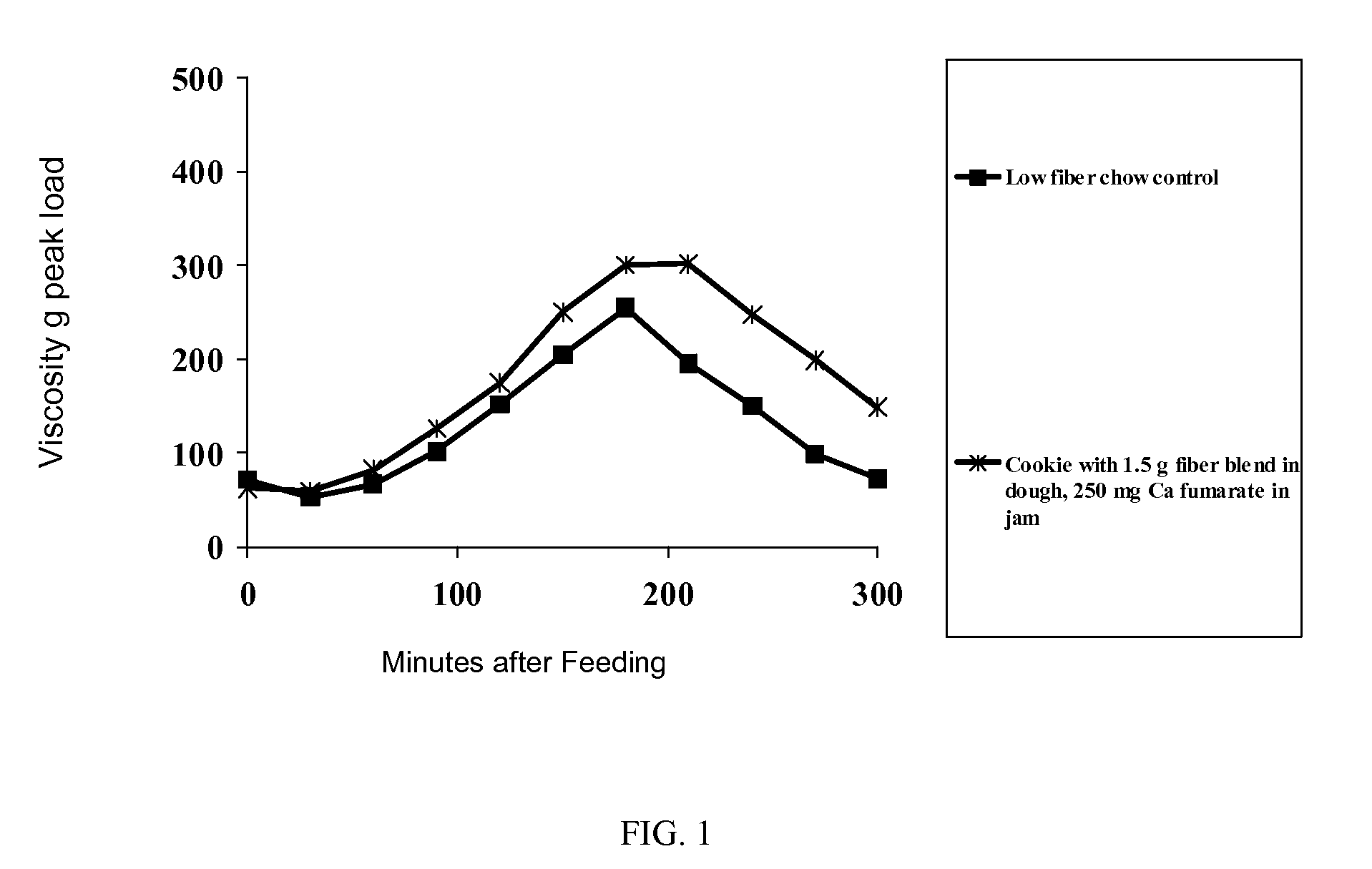Compositions and methods for inducing satiety and reducing caloric intake
a technology of satiety and caloric intake, applied in the field of compositions and methods for inducing satiety and reducing caloric intake, can solve the problems of poor weight loss candidates, individuals scoring high on rigid control scales and low on flexible control scales, and prone to compensatory behavior, so as to facilitate weight loss, reduce food intake, and reduce food intake
- Summary
- Abstract
- Description
- Claims
- Application Information
AI Technical Summary
Benefits of technology
Problems solved by technology
Method used
Image
Examples
example 1
[0109]A study to evaluate the effects of soluble fiber and soluble calcium on food intake was performed by the following procedure.
[0110]The study enrolled premenopausal non-smoking overweight or obese women (body mass index between 25 and 35 kg / square meter) selected without regard to racial or ethnic background between 20 and 40 years of age. The TFEQ, see Stunkard and Messick above, was administered to each subject.
[0111]The study was a within-subjects design with 30 participants completing three one-week treatment periods, with a washout period of one week between treatment periods. Treatment order was counterbalanced to have five subjects randomly assigned to each of six possible treatment sequences. Subjects in each treatment period consumed a test beverage [WHAT SIZE?] at breakfast and after lunch (mid-afternoon). In one treatment period, subjects consumed a placebo beverage without fiber. In two treatment periods, the test beverage contained a blend of soluble fibers of one ...
example 2
[0125]A group of overweight or obese women having a BMI of 25-35 and aged 20 to 40 years of age is selected via newspaper advertisements. The women are supplied with a case containing 24 bottles of the 2.8 g alginate fiber composition of Example 1, and a second case containing 24 bottles of the 0.5 g calcium beverage composition of Example 1.
[0126]Each woman also receives a sealed envelope containing the TFEQ for determining her eating restraint status. Each woman completes the questionnaire in her home, and mails it back to the study director. Each woman consumes one bottle of the alginate fiber beverage and one bottle of the calcium beverage with breakfast, and a second pair of beverages at mid-afternoon, between lunch and dinner. These beverages are consumed using this protocol for 12 consecutive days.
[0127]Each woman also maintains a daily food diary that records all foods consumed, and the amount of each food consumed. At the end of 12 days, the women return any unused containe...
example 3
[0128]An internet website for a food intake control product includes the questions of the TFEQ. A potential purchaser enters the website, and answers the questions. A computer program records the responses to the questions, and based on the responses, calculates the rigid restraint score for the individual. Based on the obtained calculation, a new screen appears indicating the score of the potential purchaser, and if the score is two or less, a recommendation is provided that the potential purchaser purchase and use a particular product to assist in food intake control efforts. Additional computer screens linked to this screen via menu choices provide opportunities to purchase the product on-line, or alternately provide suggestions about retail locations at which the product may be purchased.
PUM
 Login to View More
Login to View More Abstract
Description
Claims
Application Information
 Login to View More
Login to View More - R&D
- Intellectual Property
- Life Sciences
- Materials
- Tech Scout
- Unparalleled Data Quality
- Higher Quality Content
- 60% Fewer Hallucinations
Browse by: Latest US Patents, China's latest patents, Technical Efficacy Thesaurus, Application Domain, Technology Topic, Popular Technical Reports.
© 2025 PatSnap. All rights reserved.Legal|Privacy policy|Modern Slavery Act Transparency Statement|Sitemap|About US| Contact US: help@patsnap.com


